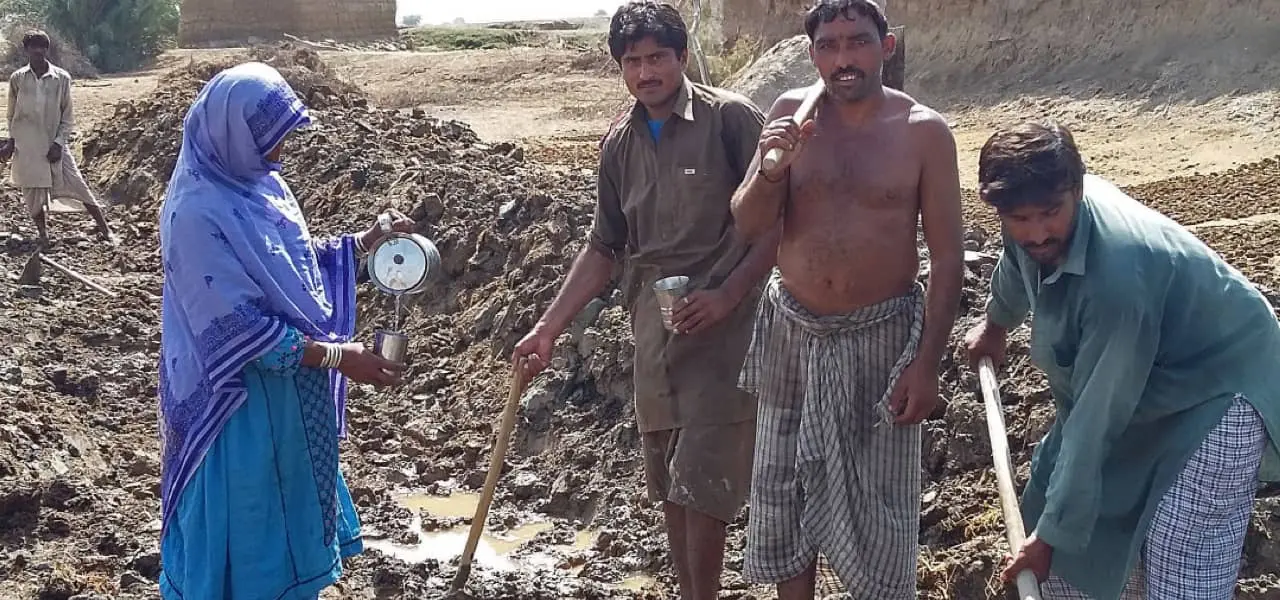Pakistani Communities Fight Back Against Climate-Related Disasters
PLEASE NOTE: THIS ARTICLE WAS FIRST PUBLISHED IN 2016
Until recently, Nazeeran Bibi felt that her life was held hostage by the rain.
Pakistan, where she lives, is particularly vulnerable to flash floods, which have hit the country six times since 2010. Each one has caused massive damage, increasing pressure on already vulnerable communities by destroying homes and damaging crops. In 2015, nearly 2 million people were affected by these floods.
“We rushed to save our lives and had to eat leaves and drink the floodwater when it inundated our entire village,” Nazeeran said. “We were already poor and working hard to provide food for our children on a daily basis, but [the floods] left us even more deprived and impoverished.”
"Now I have the knowledge and skills required to work toward managing disaster situations," she says, "and my knowledge is power."
But despair turned to confidence after Bibi became a community leader as part of Concern’s Community-Based Disaster Risk Management program (CBDRM). The CBDRM program has been helping Pakistan’s most vulnerable populations since 2011. Funded by the Office of U.S. Foreign Disaster Assistance, the program aims to build community resilience to natural disasters.
Under the program, Concern trains Emergency Response Teams (ERTs) that serve villages and regional Union Councils. Each team has about 50 members, comprising both men and women. The training focuses on first aid, search and rescue, firefighting, and distribution of relief supplies. Teams are also provided with the tools they need as first responders. After their training, ERT members return to their villages and teach other members of their community the techniques they have learned.
Concern has also worked with communities to put in place small-scale flood-proofing measures and to improve water drainage, increasing resilience against floods. These measures are low cost, replicable, and effective — as demonstrated by the higher level of preparedness shown by CBDRM communities when floods hit them between 2013 and 2015.
Women involved in the CBDRM Program have been empowered to make their voices heard much farther than their own village -- something once quite rare.
CBDRM training also includes lessons on the construction and maintenance of these flood-proofing systems, ensuring that they are supported by communities and remain operational well into the future.
Knowledge Is Power
Nazeeran Bibi’s first responder skills were unexpectedly put to use on a hot day last July when straw and animal fodder caught fire, threatening homes in her village of Daman Shah in Pakistan’s Sindh Province. The men were out for their daily work, but Bibi recalled the method she’d been taught to extinguish fires during her CBDRM training. She quickly gathered other women whom she had trained in disaster preparedness, and they worked together to douse the blaze, saving lives and property.
“Now I have the knowledge and skills required to work toward managing disaster situations,” she says, “and my knowledge is power.”
Promoting Equality
The program has contributed greatly to promoting equality by increasing opportunities for women. Because women are actively involved in the program and have had the chance to become first responders — like Nazeeran — they have been able to work their way up to leadership positions, and have become a trusted source of knowledge about disaster preparedness.
In fact, women involved in the CBDRM program have been empowered to make their voices heard much farther than their own village — something once quite rare. Imamzadi, a primary school teacher in the Dadu district of the Sindh province, is one of the many women who were selected to represent their communities on their local Disaster Management Committees. Since then, Imamzadi has become an activist in her village, and has has taken on the job of leading an advocacy campaign. She’s pushing her local government to not only take urgently needed steps to keep village drains clear (to reduce the devastating impact of recurrent flooding), but also to make disaster preparedness a government priority.
Increased Resilience
Now in its second phase, Concern’s program covers seven districts in Pakistan. Nearly 1,500 trainers in 56 Union Councils have completed the program. More than half of those trainers are women.
Evidence shows that the CBDRM program has increased community-level resilience. After recent floods, the damage in CBDRM program areas wasn’t as severe as that suffered in other districts and provinces.
There are hopes that other districts and provinces will soon reap the benefits of CBDRM. Lessons learned from implementing CBDRM were used in the design of the new Building Disaster Resilience in Pakistan (BDRP) program, to be funded by the UK’s foreign aid office, DFID. BDRP will eventually be rolled out across all of Pakistan.

